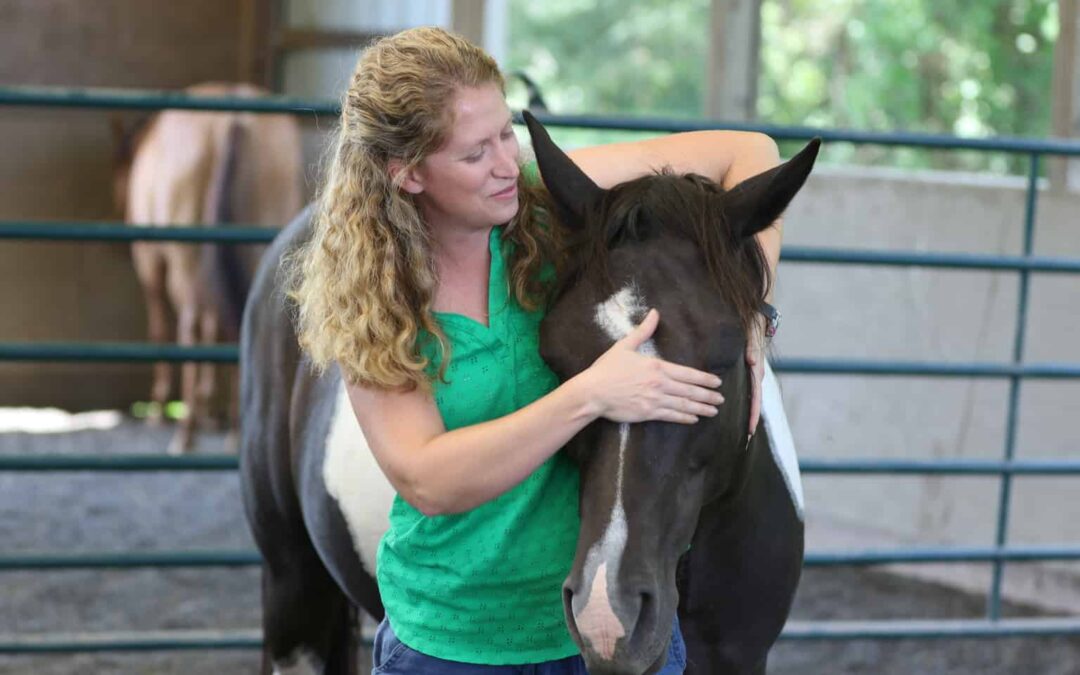
by Kathleen Choe | Nov 29, 2017 | Horsemanship, The Latest in Equine Assisted Therapy and Learning
A recent article published in the Journal of Equine Veterinary Science suggests that the concept of human leadership equating to the hierarchy in a horse herd, which has become foundational in many training approaches, is unreliable and largely irrelevant. Instead, the researchers found that consistent reinforcement of desired behaviors had a much greater effect on horses’ responses than the application of dominance or leadership types of interventions. Although the emerging language used in Natural Horsemanship training methods may sound kinder and gentler, the techniques employed still tend to be based on the use of power, domination and control, which ultimately removes the element of choice from the interaction and largely keeps a horse in his brainstem, where he is operating out of a survival, or fear response system.
The Natural Lifemanship approach to building relationships between horses and humans relies on the principles of pressure, or the raising and lowering of a calm, centered body energy, to invite connection as a choice coming from the horse’s neocortex. The horse always has the option to ignore, resist, or cooperate with the request. By creating a safe space for all of these responses, the horse learns to experience the positive benefits of being in a connected relationship with a human without fear or coercion. Releasing pressure when the horse makes the choice to cooperate uses negative reinforcement (the removal of a stimulus) to encourage positive behaviors. This lines up with what these researchers concluded after sifting through 100 scientific studies on horse behavior, where they found that “horses’ responses to training are more likely a result of reinforcement” rather than of humans taking a leadership role. The researchers ask, “could horses be assigned a more active role during training or are they merely followers with little autonomy if concepts such as leadership are applied in a training context?” Natural Lifemanship practitioners are all about giving horses an “active role” in developing healthy relationships!
To read the article, “Leaders among horses: Don’t count on humans being among them” go to https://www.horsetalk.co.nz/2017/02/09/leaders-horses-humans/
To learn more about Natural Lifemanship go to naturallifemanship.com
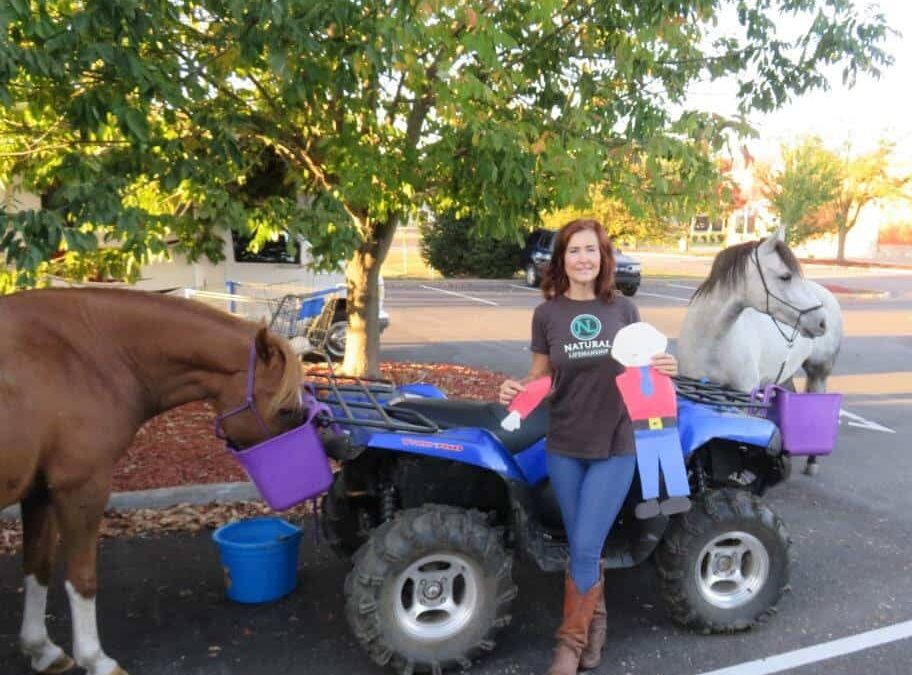
by Kimberly Highland | Oct 6, 2017 | Applied Principles
According to Chief, the entire fiasco started the day before when Flat Stanley swore an oath of revenge against Chief just because he accidentally ripped Flat Stanley’s arm off. Chief claims he’d only meant to nibble some affection on Flat Stanley; he’d had never met a boy made of paper before.
The morning started just as every morning of our nearly 2,000-mile drive from South Dakota to the Deep South. I led one pony into the trailer (ensuring no mountain lions had smuggled themselves into the stalls) while Scott stands with the other outside. The morning of concern was Chief’s turn to go first, while Rusty the True waited patiently outside.
Once I fastened Chief’s lamb’s-wool halter (safeguarding against abrasions and split ends) to the trailer sidewall, I turned about face—addling my way toward Rusty the True.
SNAP! WOOSH! BLUR!
That’s all she wrote. Chief left me in the dust of pine shavings and poo, flicking his tail at Scott and Rusty as he bee-lined for six lanes of traffic. I flailed about like Henny Penny with her comb on fire for a second or two and then made haste with my wattle to the wind, chasing Chief in near hysteria. Scott stood stock still next to Rusty watching the terror unfold, like the Tin Man waiting for his new-found heart to stop hammering in his bolted-down chest. Rusty and Flat Stanley stood quietly.
Fortunately, there was a 25-foot swath of lush green grass between the Wally-World parking lot where we’d nighted and the morning-traffic-mottled freeway. Still, if I got within 12 feet of Chief, he’d turn his ample rear to me and dash toward a 12-car-pile-up-in-the-making. Several times he hoofed along the pavement. His message couldn’t have been clearer if he held a knife to his throat and shouted to me, “Don’t make me do it. I’m serious; I’ll do it, and it’ll be all your fault.”
Finally, my brain caught up with my burning comb and waving wattle, and I remembered The Principles. When inviting another to connect, ignore=increase pressure, resist=maintain pressure, cooperate=release pressure. Chief was definitely resisting, and I’d been increasing pressure. A sure-fire recipe for an explosion. These are the fundamental principles for all relationships, and the foundation of our Faith, Hope, and Love trauma-informed care, learned and honed through Make Way Partners relationship with Natural Lifemanship.
As soon as I dropped my shoulders and took a deep breath, the flame blew out of my comb and my wattle stopped quivering. Chief immediately raised his head from the grass and set his bead dead on me. I moved too fast, and he decided I wasn’t serious about connecting, but rather had ulterior motives. Chief was off again. Hoofing the pavement, testing my calmness.
By this time a RV-ing couple, pulled to the side of the road, offering assistance to trap the poor beast. A stray bicycler kicked in a similar offer. I firmly asked them to stay far away from my thunder-cloud of a horse, and focus their attention on warning oncoming drivers of the danger.
With a prayer of surrender, I applied a fraction of pressure on Chief by focusing my eyes and energy from my core onto his backside. Without the slightest hesitation, Chief turned gracefully toward me. I took a small step backward, releasing pressure, and he took a larger step toward me. We repeated this five or six steps, until Chief caught me.
For the record, Flat Stanley flatly denies ever having made a threat against Chief. “Besides” Flat Stanley crooned, “My arm is too sore from all the stitches Kimberly threaded into me to get my arm back on to have flapped around and spooked that big oaf of a horse.” I sensed a bit of resentment with the name calling.
Chief maintains that Flat Stanley did, in fact, spook him as soon as I turned my back in the trailer, otherwise—he claims—he never would have startled and run.
Rusty the True, being the consummate Peace Maker of the Traveling Trio, settled the matter by reminding us all that placing blame or nailing down causation is—at best—unproductive. Instead, Rusty pointed out that we should simply “Apply Grace and Allow Do-Overs.”
Love, your sister along the journey, +k
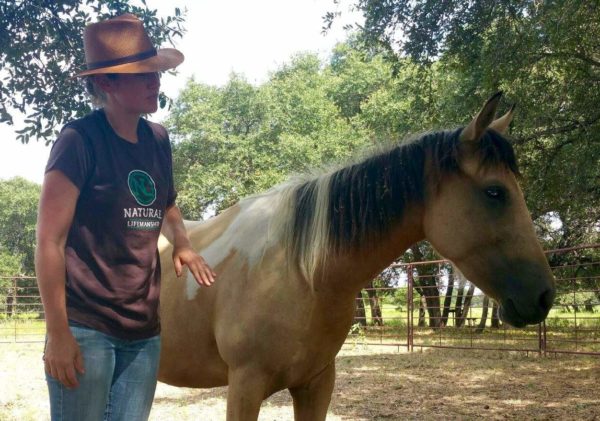
by Kate Naylor | Sep 2, 2016 | Basics of Natural Lifemanship, Case Studies
How Does This Really Look in Session?
I just had a session today where for a whole 15 minutes my co-therapist and I left the client alone with her horse. Our client requested it, and though it is not something I would do for everyone, for her it was appropriate. My co-therapist and I began a conversation, once apart from the client, about how we had to regulate ourselves against this feeling of “doing enough” in session. But then I have to remind myself that this is why Natural Lifemanship is principle-based – it is intended for an organic unfolding in each session. There is no formula in good therapy, clients come to us and we learn about them – for this, we draw on our training, our understandings of relationships, and our trust in our therapy partners and clients themselves. It is easy to fall into a habit of asking clients to “do attachment” and “do detachment”, but attachment doesn’t just mean asking a horse to look at you and detachment doesn’t just mean asking a horse to move in circles around you. We have to be more flexible in our thinking so that each session is adapted appropriately for our client’s needs.
Attachment and detachment happen in every move that we make within a healthy relationship. I was immediately reminded of this when we walked back after this 15 minutes to check in with our client and see what happened for her during that time. I had noticed that she mostly sat on the opposite side of the round pen while the horse grazed quietly nearby. From the outside, this looks like nothing is happening. But as we visit with our client we find out that she has noticed that her horse is choosing to eat clovers over just plain grass, they are sharing space and coming into physical contact every now and then. She has also noticed other things about her horse, small subtle things about her body language – her ears, a tail flick, the flies are bothering her. This client found herself picking clovers and taking them over to her horse with the desire to connect and “make her horse happy”. Though it doesn’t look like much, this is a beginning to attachment. She is attuned to her horse, she’s paying attention and she’s noticing things about her, all important aspects of being engaged in the early stages of a relationship.
As we talk about her experience, the client notices that she has done all the work that day in the relationship, asking nothing of her horse except to be allowed in the same space. While it looked like nothing happened, a small practice of attachment was occurring, but it was a one-sided attachment. These choices that my client made allowed for great processing of her relationships – in which she often works hard to meet the needs of another without asking much in return. She was able to see this herself because this is exactly how she approached this new relationship with her horse.
What I hope to work toward with this client is an understanding that for this to be a healthy relationship there has to be some growth toward mutual attachment. And hopefully, when she gets that, she will likely find that for her relationship to continue to be healthy she will need some detachment (connection with space) as well. All of this can unfold organically – just like this first session. If we trust that we created a safe (and brave, as my colleague Rebecca Hubbard, says) space for processing and vulnerability – the client can be the driver of realization and the driver of change. For now, this does not require that our client stand at the horse’s hind end and ask the horse to look at her, come to her, and to follow her, yet it is still an experience in attachment in a new relationship and provides plenty of information for reflection, processing, and goal setting. Do I expect to spend every session leaving my client alone while she sits on the grass and watches her horse? No. But if that’s what our client wants, then we have important aspects of the therapy and important aspects of a healthy relationship to explore together. It’s all information for the therapy. Allowing the process to unfold organically means that issues arise naturally, as they need. And consider how much more powerful it will be for that client when SHE decides she wants more from the relationship, and then SHE decides to ask for it. It is her relationship with that horse after all. If I am the driver of change, if I set it up and “make” it so, then is it ever really hers? What kind of relationship am I modeling to her if I don’t trust her to think, to want more, to grow?
It is not unusual for professionals to want a toolbox of “what to do” – and to therefore walk away from our Fundamentals training with the thinking that attachment is asking a horse to look at you, come to you, and follow you, and detachment is asking a horse to go away. But in fact, attachment and detachment are two categories of behavior within a relationship. If, as the saying goes, relationships are a dance, then attachment and detachment are the behaviors that make up that dance. Attachment is the contact; it’s the invitation to dance, it’s taking their hand, it’s the cheek-to-cheek connection, and the energy exchanged between the two people in close proximity. Detachment is the space between that makes it possible for fluid movement and for keeping off of each other’s toes, it’s the strong arms that create a frame around the two people, it’s the energy that is exchanged to maintain space between. It is the structure that supports the dance while attachment is the closeness. Both are necessary, both require engagement between the two. In order to execute the dance, there is a flow back-and-forth between attachment behaviors and detachment behaviors – structure, closeness, structure, closeness. This is an easy exchange of attachment and detachment based on our attunement, based on us paying close attention to each other as we move closer and then we move further away, as we make contact and then we create space – all while we are engaged with each other.
So in our sessions, and with our horses, attachment and detachment occur like this – unfolding organically as each participant makes choices. Attachment and detachment are simply building blocks of healthy relational interactions. And, as our relationship grows, our intimacy grows – the steps of the dance become more challenging, more intricate, and more rewarding – but within them is always engagement through attachment and engagement through detachment.
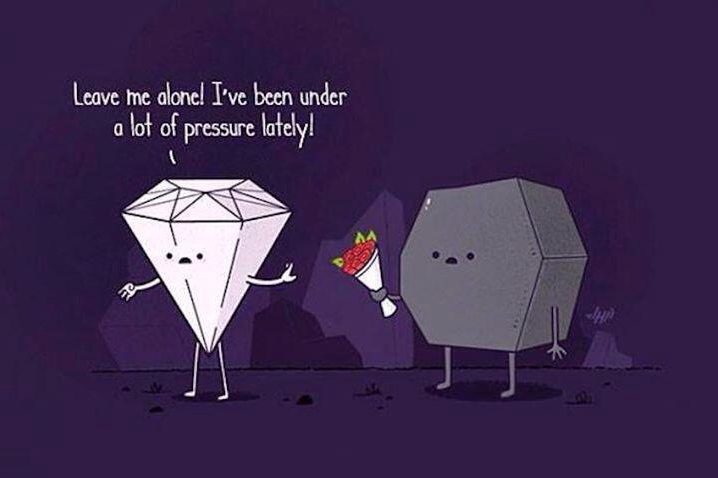
by Kate Naylor | Jun 14, 2016 | Testimonials & Reflections
Is It Always a Bad Thing?
In Natural Lifemanship, we use the word ‘pressure’ a lot. It’s been very carefully chosen, actually, because of its usability in all circumstances. We use it when we talk about horses, families, therapy, work, and everything else. But for many, the idea of pressure connotes something negative – pressure is force, pressure is stress. The dictionary describes it this way. And if you have any experience with typical horse training, you would be right. Typically, horses are forced or stressed into making the choice that humans want. So much pressure is exerted that the horse will do anything for a release. These methods of force have no place in therapy, so it is important for us to really examine the idea of pressure, and whether or not it truly is a negative thing all of the time.
I have heard many times that pressure is an unkind, unhealthy thing that we should never exert on children, animals, our partners – but I believe when people say that what they mean is inappropriate pressure. And to that I emphatically agree – YES! Inappropriate pressure is unkind, unhealthy, and not good for relationships.
But just plain old pressure? That’s simply a fact of life, and of relating.
Let’s look at some examples. When your toddler walks up to you, arms outstretched, is that not pressure? Your toddler is making a request using a small amount of pressure…energy…force. And is that a bad thing? Or is your toddler simply trying to connect? What about when your horses stand at their gate watching for you at breakfast time? Your calendar has a big red circle on Friday because your project is due? Or your dog sits by the back door, waiting patiently to be let out? All of these behaviors exert a very small amount of pressure on us – it is simply communication. When we think about it in terms of our own personal development, we call it eustress. A small amount of tolerable stress that helps us grow. Pressure can be the same, when it is used appropriately.
Now, if completely unwarranted, your toddler screamed and yelled and threw himself on the floor about being picked up; or your horses tore down their gate and galloped into the feed room…now that is some serious pressure, that is inappropriate pressure.
In a perfect world, we wouldn’t have to exert pressure on each other, right? Some folks seem to think so. But, can you have a relationship without pressure? Can you grow without pressure? Physically speaking, no, we can’t. Consider an astronaut – without gravity constantly exerting pressure, brains and bodies atrophy. And emotionally speaking, no, we can’t either. How far would you have gotten in academics had you not felt some pressure from yourself and those who loved you (pressure as expectation)? Would you and your partner ever have met if someone didn’t work up the courage to speak to the other one (pressure of requesting engagement)? Would you and your pet have much of a relationship if you both just went your own way and took care of yourselves all the time – never exerting any requests or offering any engagement? Likely not. We would physically deteriorate, and be relationally alone, without pressure.
Relationships require give and take – giving of time, of attention, of energy while also taking of time, of attention, of energy. We engage in this dance of a relationship through moments of pressure – requests made by one to the other. When it is done appropriately, pressure is not harmful or frightening. It is the stuff healthy growth and relationships are made of.
Kate Naylor is a licensed therapist specializing in TF-EAP in the Austin, Texas area. For more information visit: http://www.Kategosenaylor.com
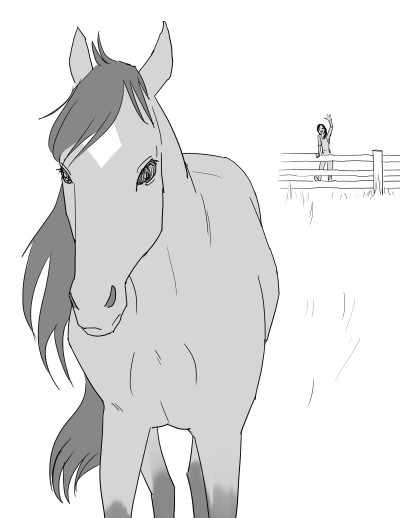
by Rebecca Hubbard | May 12, 2016 | Applied Principles
Rhonda Smith is the CEO and founder of Spirit Reins, a non-profit that provides treatment to children and families who have experienced traumatic events. She interviewed Buck, the main character in the book, The Gift, at his home pasture for Spirit Reins’ Amplify Spirit Reins campaign for Amplify Austin. Alicia Nance is Buck’s friend and lends a hand as a translator.
Rhonda: Buck, thank you for joining us via satellite for Amplify Spirit Reins. The weather looks gorgeous up there in North Carolina.
Buck: You are welcome Rhonda. I’m happy to do it and glad to help out a friend of Pip’s. The sun is shining today. It is very, very warm here. I like to stand down by the lake where the wind is a little cooler.
Rhonda: It is warm here as well. What do you think of the story that The Gift tells?
Buck: I think it is an important story that helps folks understand that just because they think something is one way doesn’t mean it is. All that time Pip thought I was a mean ol’ guy, and I’m not. I think that having friends and knowing how to make them is important. The part that I think is the most important for horses is we don’t like to be alone. We want to be with our herd—that’s where we feel the safest.
(more…)







Recent Comments